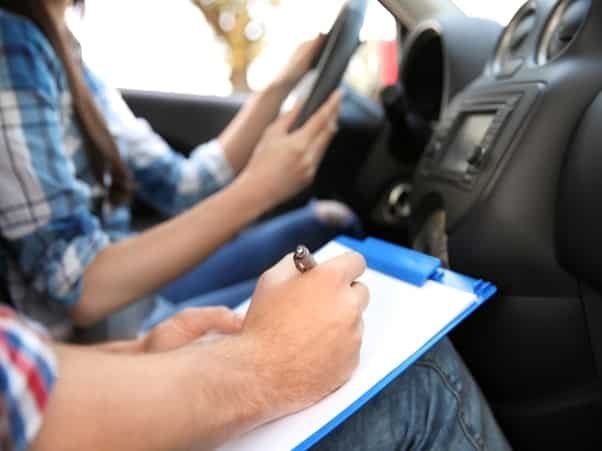All people worry about having faults on their driving tests but it is okay to make a few mistakes. The key is to understand how the faults work so that you can avoid serious faults. When you make errors, they are either counted as a major fault of a minor fault. Minor faults are those mistakes that cause an inconvenience for other drivers but they are not dangerous. They are called driving faults. On the other hand, major faults are those errors that could or would cause an accident if another driver were there. They can be classed as dangerous faults or serious faults.
How Many Faults Can You Get and Still Pass?
You can make up to 15 minor mistakes and still pass your driving test. However, you will fail the test with only one major fault. It is important to know the dangerous faults and how to avoid them. You might consider taking driving lessons at a driving school such as Oxon Driving Tuitions to make sure that you have the experience and knowledge you need before you take your test.
How Can You Avoid Serious Faults in a Driving Test?
The first step is to know what the major faults are and practice until you feel very confident. Serious faults are considered to be something that is potentially dangerous so you will want to avoid these for your own safety as well.
Make sure that you take enough driving lessons and practice as much as you can before your test. Your instructor will know whether you are ready for the test so you should trust him or her. When you have driving lessons from a driving school such as Oxon Driving Tuitions, you will be in good hands to learn everything that you need to know to pass your test confidently.
On the day of the test, make sure that you are well-rested. You should eat breakfast and take time to have one
last practise before your test. Stay calm with breathing exercises. If the silence bothers you, speak to your tester. This can help to ease the tension. Do your best to relax, practice what you have already learned, and be sure to pay attention at all times.
The Most Common Driving Test Faults
Knowing the most common driving faults will give you an opportunity to make sure that you practice them until you know them well. If you can learn how to do the following, you will have a much easier time passing your driving test. Take a look at the following common driving test faults.

- Junctions: Failing to make proper observations: One of the most common causes of failing a driving test is not making proper observations at junctions. They expect you to stop, look in your mirrors, and look both ways.
- Stalling the car: If you stall on the side of the road and it doesn’t create a dangerous situation, you will likely only receive a minor; however, if you stall in traffic or in a situation where you could cause an accident, you might get a major.
- Touching the kerb while parking: If you jump up on the kerb or crash into it hard, you will get a major fault. But if you just graze the kerb, you should only get a minor.
- Hesitating at a junction or roundabout: If you pull out when it is not safe to do so or you pass on three opportunities to pull out, you will get a major. However, if you hesitate once or twice, you will be fine.
- Putting the handbrake on: You should put the handbrake on when you park your car but you don’t need to use it during most situations unless the car is in danger of rolling.
- Crossing your hands on the steering wheel: It is recommended that your hands remain at the 3:00 and 9:00 positions but you will not fail for moving them or crossing your hands.
- Driving too slowly: You may want to drive slowly to be cautious but if you drive too slowly and cause delays in traffic, you can receive a minor or a major depending on the situation.
- Excessive or inappropriate use of speed is one of the major causes of accidents in the UK, so it’s little surprise that driving examiners take such driving behaviour seriously.
- Failing the sight test: You will need to read the registration plate from twenty meters away before you can take the driving test. If you can’t do this, it is an instant fail and you won’t even take your test. Make sure that you have your glasses with you if you need them.

Five Parts of the Driving Test
When you arrive to take your driving test, there are five parts. The first step is the eyesight test. You will need to read the registration plate from 20 meters away. If you can’t do it, it is an automatic fail. If you succeed, you can move to the next step.
The second step is the “Show me/Tell me” questions. Your examiner will ask you two safety questions about vehicle checks. For example, he or she may ask you how to check to make sure that your headlights are working.
The third part is the general driving ability. You will drive in different road traffic and conditions. You will make a hill start, practice normal stops at the side of the road, and pull out from behind a parked vehicle. You may also be asked to perform an emergency stop.
In the fourth part, you may be asked to do one of those manoeuvres, parallel parking, or bay parking ( pull in head-first and reverse out or the opposite), the third manoeuver is to pull up on the right-hand side of the road, reverse two car lengths, and join back into the traffic.
Finally, independent driving, the learners are asked to drive for twenty minutes and follow satnav (tomtom 52) or rarely a traffic sign, You will only get a fault if you make a major mistake while following the directions, not for making a wrong turn.
